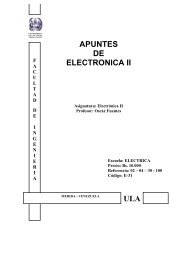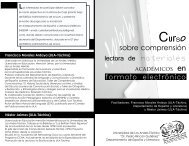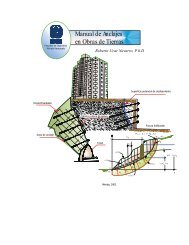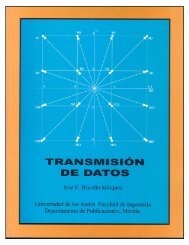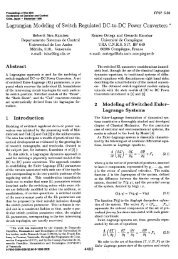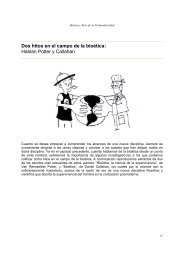Passivity-based Control of Euler-Lagrange Systems:
Passivity-based Control of Euler-Lagrange Systems:
Passivity-based Control of Euler-Lagrange Systems:
Create successful ePaper yourself
Turn your PDF publications into a flip-book with our unique Google optimized e-Paper software.
x<br />
Preface<br />
chapter clearly illustrates how PBC, as applied to <strong>Euler</strong>{<strong>Lagrange</strong> models, yields a<br />
modular design which eectively exploits the features <strong>of</strong> the interconnections. In a<br />
simulation study we compare our PBC with a backstepping design showing, once<br />
again, the superiority <strong>of</strong>PBC.<br />
Background material on passivity, variational modeling and vector calculus are<br />
included in Appendices A, B and C, respectively.<br />
The book is primarily aimed at graduate students and researchers in control theory<br />
who are interested in engineering applications. It contains, however, new theoretical<br />
results whose interest goes beyond the specic applications, therefore it might be useful<br />
also to more theoretically oriented readers. The book is written with the conviction<br />
that to deal with modern engineering applications, control has to reevaluate its role<br />
as a component <strong>of</strong> an interdisciplinary endeavor. A lot <strong>of</strong> emphasis is consequently<br />
given to modeling aspects, analysis <strong>of</strong> current engineering practice and experimental<br />
work. For these reasons it may be also <strong>of</strong> interest for students and researchers, as<br />
well as practitioning engineers, involved in more practical aspects <strong>of</strong> robotics, power<br />
electronics and motor control. For this audience the book may provide a source to<br />
enhance their theoretical understanding <strong>of</strong> some well{known concepts and to establish<br />
bridges with modern control theoretic concepts.<br />
We have adopted the format <strong>of</strong> theorem{pro<strong>of</strong>{remark, which may give the erroneous<br />
impression that it is a \theoretical" book, this is done only for ease <strong>of</strong> presentation.<br />
Although most <strong>of</strong> the results in this book are new, they are presented at<br />
alevel accessible to audiences with a standard undergraduate background in control<br />
theory and a basic understanding <strong>of</strong> nonlinear systems theory. In order to favour<br />
the \readability" <strong>of</strong> our book we have moved some <strong>of</strong> the most \technical" pro<strong>of</strong>s to<br />
Appendix D.<br />
The material contained in the book summarizes the experience <strong>of</strong> the authors on<br />
control engineering applications over the last 10 years. It builds upon the PhD theses<br />
<strong>of</strong> the second and fourth author as well as collaborative research among all <strong>of</strong> us, and<br />
with several other researchers. Numerous colleagues and collaborators contributed<br />
directly and indirectly, andin various ways to this book.<br />
The rst author is particularly indebted to his former PhD students: G. Espinosa<br />
and R. Kelly triggered his interest in the areas <strong>of</strong> electrical machines and robotics,<br />
respectively, we have since kept an intensive and very productive research collaboration<br />
G. Escobar, K. Kim and D. Taoutaou carried out some <strong>of</strong> the experimental<br />
work on converters and electrical machines. He has also enjoyed a long scientic collaboration<br />
with L. Praly who always provided insightful remarks and motivation to<br />
his work. Many useful scientic exchanges have been carried out over the years with<br />
H. Nijmeijer, M. Spong and A. J. van der Schaft, while Henk and Arjan motivated<br />
him to improve his theoretical background, Mark always found the threshold necessary<br />
to make a robot turn. He would like to thank all his co{authors from whom he<br />
learned the importance <strong>of</strong> collaborative work. Finally, he wants to express his deep



